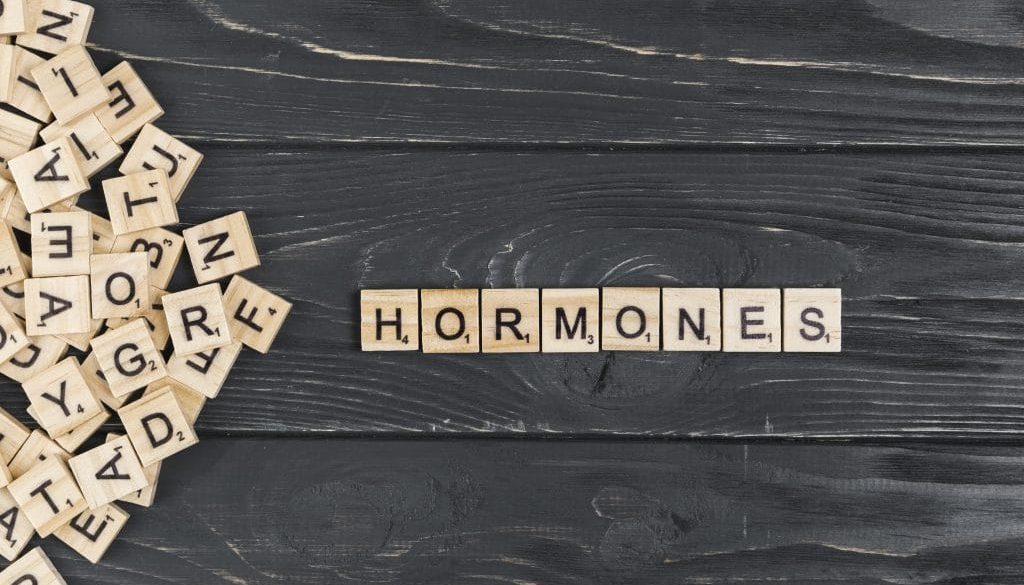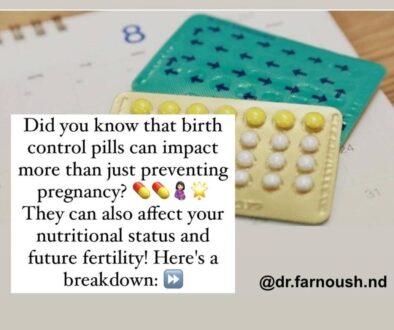Estrogen Dominance Natural Treatments
Estrogen Dominance-Hormone Imbalance
To understand estrogen dominance, we have to consider the role of another important hormone, progesterone. Progesterone and estrogen maintain an often tricky seesaw in our bodies. Prior to menopause, the balance shifts at different stages of the menstrual cycle. Estrogen dominance isn’t necessarily a surge of estrogen but an imbalance in that seesaw. Simply put, estrogen dominance happens when the seesaw tips to one side because there is not enough progesterone to balance out the estrogen. There’s actually no “set” number we can measure that proves an estrogen dominance diagnosis. It’s the overall hormonal profile that is important.
How does estrogen become dominant? A key factor is timing. Or, to be more specific, the time of our lives. Consider a normal menstrual cycle during our reproductive years: After we ovulate mid-cycle, our bodies produce progesterone to balance out the estrogen.
But as we near menopause, we often have some menstrual cycles when we do not ovulate. As a result, there is not enough progesterone to balance out the estrogen. Enter estrogen dominance — and its long list of possible symptoms.
To a certain extent, estrogen dominance is a natural part of our aging process. However, recent years have seen a rise in estrogen-dominance complaints, and our busy lifestyle may be a significant factor. Environmental and behavior issues can increase estrogen levels, tipping the seesaw further. What’s to blame? Take a look at this list.
- Excess body fat can increase estrogen levels since fat cells produce estrogen. Of course, this creates a frustrating cycle for some women, as the fatigue associated with estrogen dominance makes it difficult to lose weight.
- Chronic stress will throw off your hormonal balance, often resulting in excess estrogen. In times of stress, your body produces too much cortisol. Cortisol negatively affects progesterone production, so the result is a shortage of progesterone to balance the body’s estrogen.
- Hormone replacement therapy that doesn’t take all hormones into account and doesn’t treat with customized dosing can inadvertently create estrogen dominance.
- Environmental sources of estrogen in our environment, particularly with regard to plastics and pesticides, can negatively affect hormone levels.
- When we’re not getting enough sleep, our melatonin levels decrease. And melatonin helps regulate estrogen levels. In other words, if we don’t have enough melatonin to keep estrogen in check, we can end up in a cycle of sleep trouble.
How Can You Restore Hormone Levels? (Hormone imbalance treatment)
Our practice can work with you to re-balance your hormonal havoc. We can create a lifestyle plan that works for you by starting with an accurate diagnosis. As a starting point, these changes are recommended:
- Increase your intake of fiber. Insoluble fiber can bind with estrogen in our digestive tract. As a result, excess estrogen is eliminated with a high-fiber diet.
- Go organic. Many pesticides have been identified as estrogen disruptors. That means they disturb the natural balance of estrogen. Research is still being done in this area, but the connection is becoming clear. Plus, organic food is delicious!
- Get enough sleep. We know – you’re busy. But sleep will help restore your melatonin levels and, subsequently, your estrogen balance.
- Choose your health and beauty products wisely. Xenoestrogens have a similar molecular structure to estrogen. Bisphenol A (BPA), which is often used in plastics, is an example of xenoestrogen. When these substances enter our bodies, our system reacts as if they are actual estrogen. Some simple steps, such as avoiding plastic food storage containers and products with artificial scents, can help reduce your exposure to xenoestrogens.
- Get moving. Exercise will relieve stress levels and could help reduce body fat. Strength training and yoga are great activities.
- Decrease stress. Again, we realize this is easier said than done! But an estrogen-dominant diagnosis might be the wake-up call for you to take a step back and assess your stress levels. Are you doing too much?
Do you think you might have a hormonal imbalance? Do the estrogen dominance symptoms sound a bit too familiar? Please get in touch with me, and we’ll get to the bottom of what’s going on and create a plan of action to bring your body back to good health. Call (416) 684-55-14 or click here to book an appointment.







